Cet article est également disponible en: French
The Perpignan Sanch (blood) procession is a strange event, imbued with religious symbolism. Naturally, since it is Good Friday, for the participants silence and mournful looks are de rigueur. In addition, they are dressed solely in black (death) or red (blood), except for children and priests (the innocents, the saved) who are allowed some white.
Standing in the crowd near the start, I ask myself what it all means now, in a largely agnostic 21st-century France? I listen to the people standing nearby hoping for some kind of an answer. One says “Please be so kind as to move aside. I’ve been waiting here half-an-hour and I hope to obtain some good pictures.” Another is indifferent: “I only come because my wife likes it. We always sit in this café.” The onlookers are tourists. For us there is no dress code, no specified behaviour and no sign of religious fervour, though a few people do cross themselves. At first I have the impression that it is all just folklore, yet another attraction dedicated to the worship of a quite different god: the shops and restaurant are doing a brisk trade.
But the procession just keeps on coming. There are so many participants and so many floats, that at one stage I wonder if the beginning of the cortege is coming round again. Later I count the participants – nearly 700 – and the floats – about 35. The whole thing has quite literally taken on a different dimension for me, though I am not a believer.
I listen more carefully to the commentary – intrusive but informative – from the loud-speakers. It speaks of crime, punishment and injustice. Of Jesus’s punishment, of course, but also about other punishments. Of the time when a condemned man would be lucky to get to the scaffold alive. In the Middle Ages the crowds lining the streets could tear a prisoner from his jailers and wreak their vengeance directly.
And therein lies one of the reasons for today’s events. In 1416 a Dominican priest, Vincent Ferrier, came to Perpignan and in one sermon likened Jesus’s treatment to that of those condemned to death in the 15th century. The homily inspired two of the town’s confréries (brotherhoods – medieval friendly societies) to create a joint venture, the confrérie de la Sanch (pronounced “sank”). It was to accompany condemned prisoners to the scaffold and ensure them a Christian burial. The participants would all wear conical hats hiding their faces so that the prisoner couldn’t be identified. There was also to be a celebration of the Crucifixion in a grand procession on the evening of Maundy Thursday (it only became the Friday in 1958).
If the procession has survived 600 years without being debased it is thanks to the Catholic Church. In the 18th century it was banned because the authorities considered it too decadent, too Spanish, but for over a century it continued furtively inside the Church of St Jacques. It all but disappeared again in the 20th century. One bishop, Joël Bellec was so unhappy with the idea that he refused to allow churches to be used. Thankfully, his successor Henri Lheureux had different ideas.
The procession is preceded by a cross which symbolically tells the story of the crucifixion, a handy summary for the illiterate medieval peasantry. On this cross the elements are:
The chalice used at the last supper. The lantern of the soldiers come to arrest Jesus. Saint Peter’s sword with an ear stuck to it. This is the right ear of Malchus, the high priest’s servant. The cock which crowed marking the fulfilment of Jesus’s prediction that Peter would deny him three times before dawn. The hand of the official who slaps Jesus in the face during questioning. The pitcher which Pontius Pilate used to wash his hands of the affair. The scarlet robe and the crown of thorns used when the soldiers dressed Jesus as the “King of the Jews”. The dice the soldiers used to decide who would have Jesus’s tunic. Veronica’s cloth, marked with Jesus’s face. The hammer used to nail Jesus to the cross. The sign reading INRI “This is Jesus, the king of the Jews”. The spear which the centurion Longinus used to stab Jesus in the flank. Another spear, with a sponge soaked in vinegar to quench Jesus’ thirst. The pliers and the ladder used to remove the body from the cross. The rope with which Judas hangs himself. A trumpet which could be the trumpet of the Resurrection, though I haven’t been able to find a reference to this.
References:
Encyclopédies Bonneton (2000) Pyrénées-Orientales Roussillon. Paris: Bonneton.
L’office de tourisme de Perpignan
L’ Independant (journal)
L’Express (magazine)


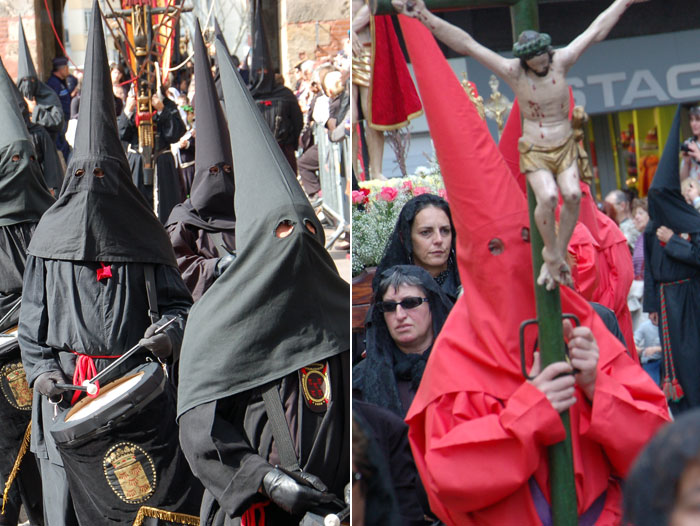




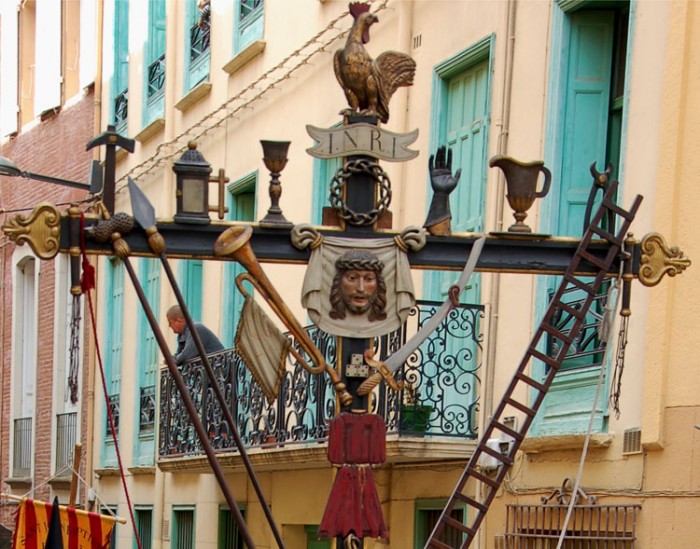
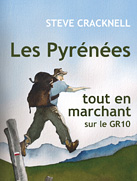
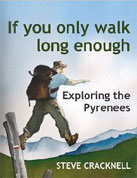

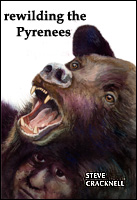



Footprints on the mountains